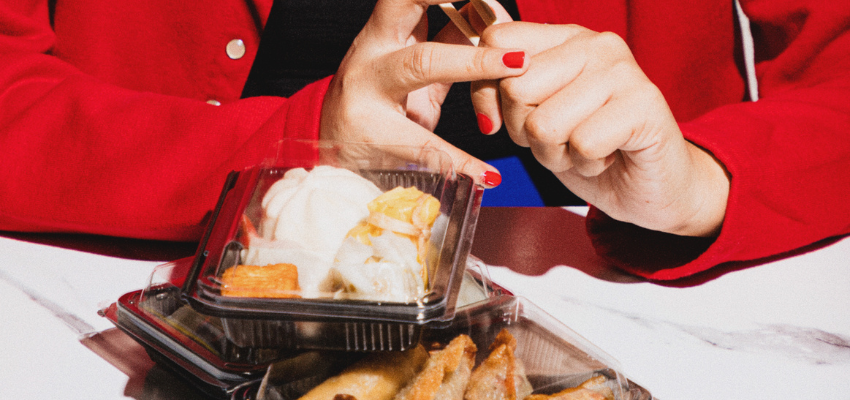There was a time when food delivery was just about convenience. Today, it's much more: a fertile ground where taste and wellness meet, compete, and blend. On one hand, the desire to eat healthy is growing; on the other, the allure of that comforting, homey dish remains strong.
Comfort food still reigns supreme: rich, satisfying meals that evoke memories and offer instant gratification. Despite all the wellness promises, when ordering from home, people often follow their heart… and their appetite.
But this isn’t about giving up: it's about seeking balance. The future of food delivery speaks in shades of grey, where lightness doesn’t mean sacrifice, and flavor is never sidelined. The hybrid wins, when it can nourish and satisfy in a single bite.
By the Numbers: Growth and Contradictions
The global food delivery market isn’t slowing down: in 2024, it reached $288.84 billion and is expected to grow at a CAGR of +9.4% through 2030 (Grand View Research)
The healthy delivery segment is also growing: valued at $10.58 billion in 2024, with an even stronger forecasted CAGR of +14.33% through 2032 (Business Research Insights).
And yet, the numbers don’t tell the whole story. Because when the moment to order arrives, heart and hunger take over. According to the DoorDash Delivery Trends Report 2025, 98% of consumers have used delivery to satisfy a craving an urgent, specific desire that’s hard to resist.
Why comfort food wins? There’s more than one reason and all are deeply rooted in daily life. Healthy meals often cost more. And when ordering impulsively, that extra price can make a difference. Apps tend to promote bestsellers: more visibility for the most clicked, most photographed dishes—usually comfort food.
In a fast-paced day, the stomach doesn’t want challenges, it wants certainty. The familiarity of a known dish, the promise of a reassuring taste, outweigh any novelty. And let’s not forget the visual factor: comfort food, with its rich colors and full shapes, is made to be looked at, photographed, shared. It tempts you, even before the first bite.

Hybrid Strategies: The Future of the Menu
The answer? Infusing healthy dishes with comforting elements. Some international brands are already doing it.
True Food Kitchen (USA)
In February 2025, the brand completely removed industrial seed oils from its 46 locations, switching to olive and avocado oil. Despite its wellness focus, the menu still includes indulgent options like creamy curries, warm bowls, and pizzas with balanced yet flavorful ingredients.
The Food Lab (Egypt)
More and more delivery-only ghost kitchens are creating health-focused menus with an indulgent twist: vegetarian bowls with crunchy toppings, wraps with creamy but balanced sauces, or better-for-you desserts alongside nourishing mains.
The Food Lab is a Cairo-based ghost kitchen startup founded in 2020, specialized in developing “meaty” plant-based alternatives such as veggie burgers and patties that mimic the texture and flavor of real meat, but enhanced with indulgent toppings like creamy sauces, crunchy elements, and plant-based cheeses.
What can operators do? Make wellness desirable
It’s not enough to prepare healthy food, you have to present it the right way. Words matter, and they can spark desire. Terms like “gratifying,” “wholesome,” and “comforting” work better alongside “nutritious” and “light.” They speak to those who want to feel good while enjoying the moment.
Menus can help too: modular options allow customers to customize their meals—a crunchy topping, an extra sauce, a special ingredient can turn a healthy dish into a personalized experience.
And then there's the packaging: transparent, clear—but inviting. It should explain the benefits, yes, but without forgetting pleasure. Because a dish that’s beautiful to open is already an invitation to enjoy.
Comfort food isn’t health’s enemy. In fact, it can be its tastiest ally. Today, it’s not only possible, it’s necessary, to create a new generation of delivery dishes that speak to both the palate and well-being. Because today’s consumer doesn’t want to choose between “good” and “good for you.” They want both. And they want it now, with a tap.
foodservice Sigep Vision trends
















